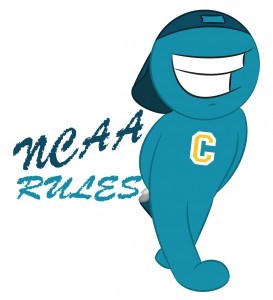There are many reasons why college athletes choose to transfer schools before they  graduate. They may not be enjoying the school like they thought, they want to change their major, or want a different athletic opportunity. Whatever the reason may be, athletes should heavily consider the impact transferring to another school may have on their academics and their progress towards graduation.
graduate. They may not be enjoying the school like they thought, they want to change their major, or want a different athletic opportunity. Whatever the reason may be, athletes should heavily consider the impact transferring to another school may have on their academics and their progress towards graduation.
Athletes need to know and understand the restrictions of transferring before they make their decision. They should really consider why they want to transfer and if switching schools is really the best option for them. The NCAA enforces rules on transfer athletes because switching schools can have a drastic effect on their graduation timeline. As student-athletes, they really need to be weary about how transferring schools might affect their academics.
Crucial Points about Being a College Transfer
• The NCAA does not prevent athletes from being able to transfer: One of the NCAA’s main goals for transfer athletes is to make sure they remain academically eligible to compete. They enforce transfer rules to make sure that athletes are eligible to compete at the new institution and will continue to progress towards earning a degree. Having transfer restrictions for athletes encourages crucial consideration regarding whether or not a transfer to a new school is the best decision for an athlete.
• Contacting college coaches: Students are required to get written permission from their current school’s athletic department to be allowed to contact another school and earn an athletics scholarship at a new institution. College coaches are also not allowed to contact current student-athletes at other schools until the athlete has gotten the permission of the athletic department. This is to ensure that the recruiting process ends once the athlete is enrolled in college and isn’t bothered while they compete for another school.
• Football and basketball players have special transfer rules: Because football and basketball are historically the sports with the most transfers, most players will be required to sit out a year after they transfer to a new school. The NCAA enforces this through the academic year-in-residence rule: they want to make sure that the athlete has time to adjust to the school’s environment and that they transferred for both athletic and academic reasons. Football and basketball players are still able to earn an athletic scholarship and practice with the team when they sit out that year but cannot compete.
• Scholarships do not bind the athlete to the school, even multi-year scholarships: A student-athlete is allowed to transfer to another institution even under a scholarship contract. An athlete may choose to transfer at any point. Even multi-year scholarships don’t bind an athlete to a school, so an athlete is able to transfer during the term of the scholarship. However, if a student has signed a National Letter of Intent (NLI), they are required to stay at that school during their first year of competition.
Need more questions answered about transferring schools? Ask us your questions by leaving a comment below or connect with us on Facebook and Twitter.